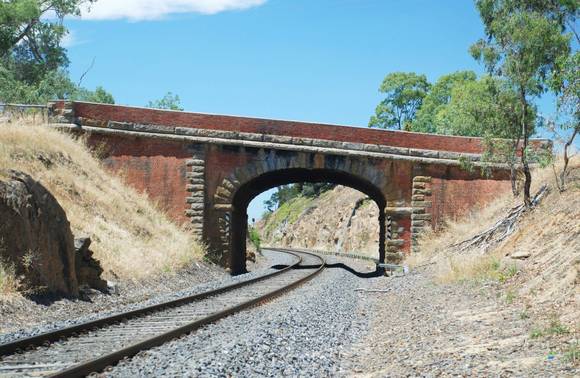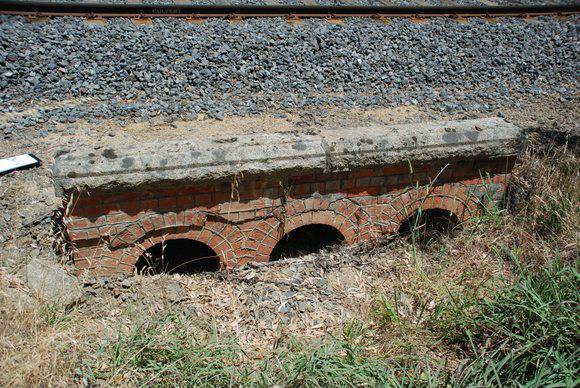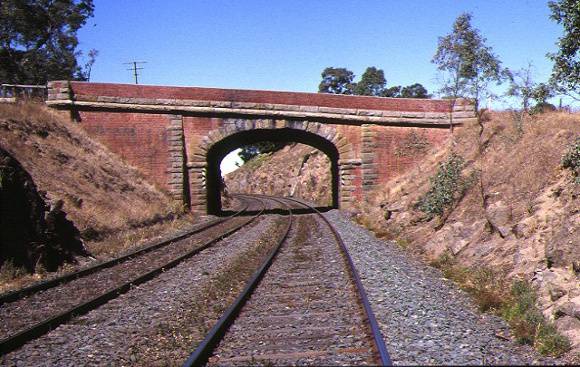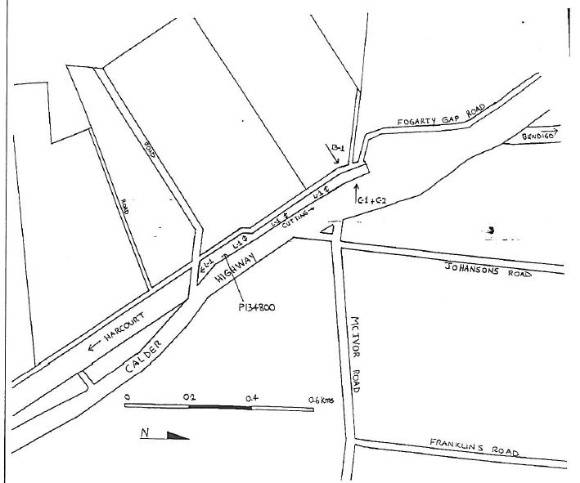| Back to search results » | Back to search page » |
|
PORCUPINE HILL RAILWAY PRECINCT (MURRAY VALLEY RAILWAY, MELBOURNE TO ECHUCA)
LocationFOGARTY GAP ROAD RAVENSWOOD SOUTH, MOUNT ALEXANDER SHIRE
File Number608473LevelRegistered |
|
Statement of Significance
What is significant?
The Porcupine Hill Railway precinct forms part of the Murray Valley Railway (Melbourne to Echuca line). Opened in five stages from February 1859 to September 1864, the Murray Valley Railway was the largest of the Colony?s first two main trunk lines. The inability of the line?s original private promoters - the Melbourne, Mount Alexander and Murray River Company - to raise sufficient funds to construct the line, led to the government purchasing the company and embracing a public railway system. The Government?s decision to construct the line in 1856 was accompanied by the formation of the Victorian Railways Department. The building of the line during the early 1860s reflected the strategic economic issues of the day: servicing the important goldfields of Castlemaine and Bendigo, and capturing the Murray River and Riverina trade for the Port of Melbourne. With a labour force of more than 6,000 men, the Melbourne to Echuca line was the Colony?s largest capital works project of its time. The line is still used today for public transport and freight services and comprises a very large number of structures and facilities of varying ages, conditions and degrees of operational and business significance.
How is it significant?
The Porcupine Hill Railway precinct is of historical, scientific and archaeological importance to the State of Victoria.
Why is it significant?
The Porcupine Hill Railway precinct (comprising one rail-under bridge, two culverts and a massive cutting) is historically and scientifically significant as an integral part of the railway line and is an important representative sample of one of the earliest and grandest capital works projects in Victorian history. The identified features comprising the precinct are all substantially intact and provide a crucial reminder of the adoption of English engineering and architectural standards and the role of the Victorian Railway Department in developing the Colony?s engineering expertise.
The Porcupine Hill railway cutting is significant as an one the largest construction undertakings on the line and is also notable for its exposure of a rare geological phenomenon, known as a lava dyke. The volume of granite and topsoil removed from the cutting was approximately 20,000 cubic metres. A large encampment with a population of some 200 people surrounded the railway works. The Fogarty Gap Road railway bridge illustrates the characteristic brick and stone segmental arched type of bridge which was used on the Ravenswood-Bendigo section of the line.
The Porcupine Hill railway cutting, along with its associated rail-underbridge and culverts are excellent examples of the range of materials, building techniques and design types used on the Kyneton to Bendigo section of the line. The Porcupine Hill Railway precinct makes an important contribution to defining the character of the Victorian railway network. The Porcupine Hill Railway precinct also has significant archaeological value due to the potential to contain buried evidence of the huge workers? camp that accommodated the massive workforce undertaking the works.
Group
Transport - Rail
Category
Railway Bridge/ Viaduct







